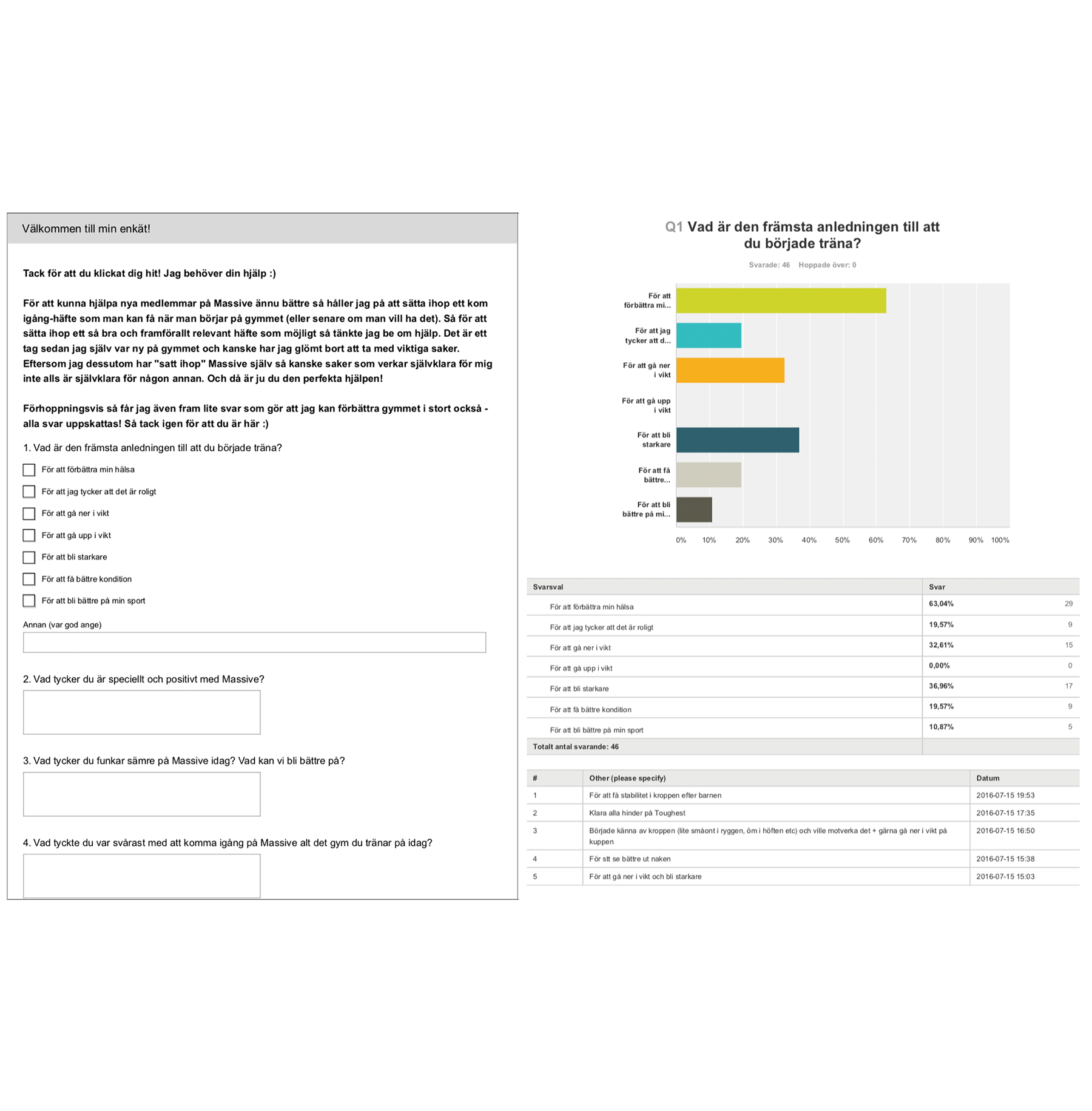
Business Management & UX
Business Management & UX
A big part of running a business is to keep track of trends within your user groups and how they’re responding to any changes. Tracking this can also lead to user driven innovation, which makes user feel like a part of the decision making process in the business.

Customer Journey Mapping
A big part of understanding your customers is to analyse what their flow through your business looks like. By conducting user research through methods like semi-structured interviewing. Once you have this information, you can identify the different touchpoints at different stages in the user journey. This makes it easy to analyse how each stage and touchpoint can be improved. It then becomes possible to track KPIs for these touchpoints.
The journey on the image is from the analysis of Massive Performance’s user journey. Customer journey mapping is very helpful for online as well as offline work. By aligning the two, it’s easier to create a holistic user experience that makes the user feel like they are always the centre of attention.

Surveys & Questionnaires
One of the most useful tools to complement any qualitative research work is to add qualitative data collection to the mix. Polls, questionnaires and surveys are useful to measure trends in a way that may require more time through a qualitative analysis.
When conducting qualitative interviews it is possible to shape the quantitative questions from the information extracted in the interview analysis.
The same document can be used throughout a development process to keep track of customer satisfaction and to early spot any challenges that may need solving before they turn into problems.

Corporate Health Analysis
One area that is often overlooked in customer experience work is to look at the staff experience, especially in bigger companies, where the management don’t have frequent contact with staff.
In the Corporate Health Analysis it is possible to analyse how to inspire staff to more frequent movement, as well as giving the right help and assistance to the right people. Through this assessment it is easy to split different groups into different health pathways, depending on their needs.
The assessment is shaped by looking at managements wishes first, and then a first phase begins where input from staff of different levels of responsibility is collected, to get as many perspectives on what might be needed as possible. Before phase two a first project draft is presented to management and if it is accepted the project can start.
These projects last between 12-36 months, and the main objectives are to lower the risk of health issues and to get staff to learn how to keep themselves well.

Corporate Training Plans
This is great complement to the Corporate Health Analysis, in which informative material is created for specific user groups in the business. It also includes training in the gym, body scans and some coaching for those who needs it.
Feedback is collected continuously through the project to allow for customisation for groups as well as individuals. This way of working can save companies a lot of money, since any health concerns can quickly be addressed, and the right professionals can help. Proactive health care at its best.